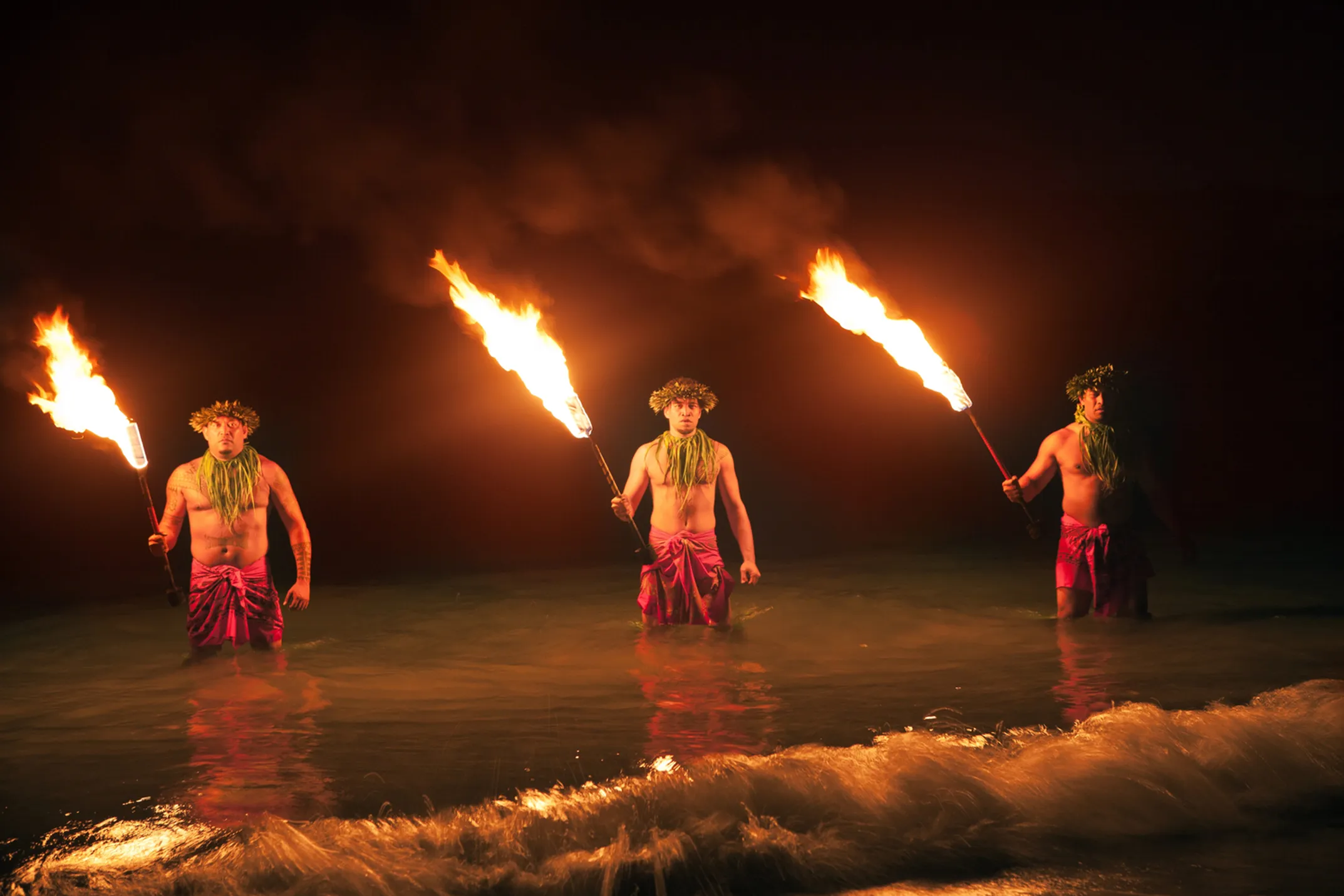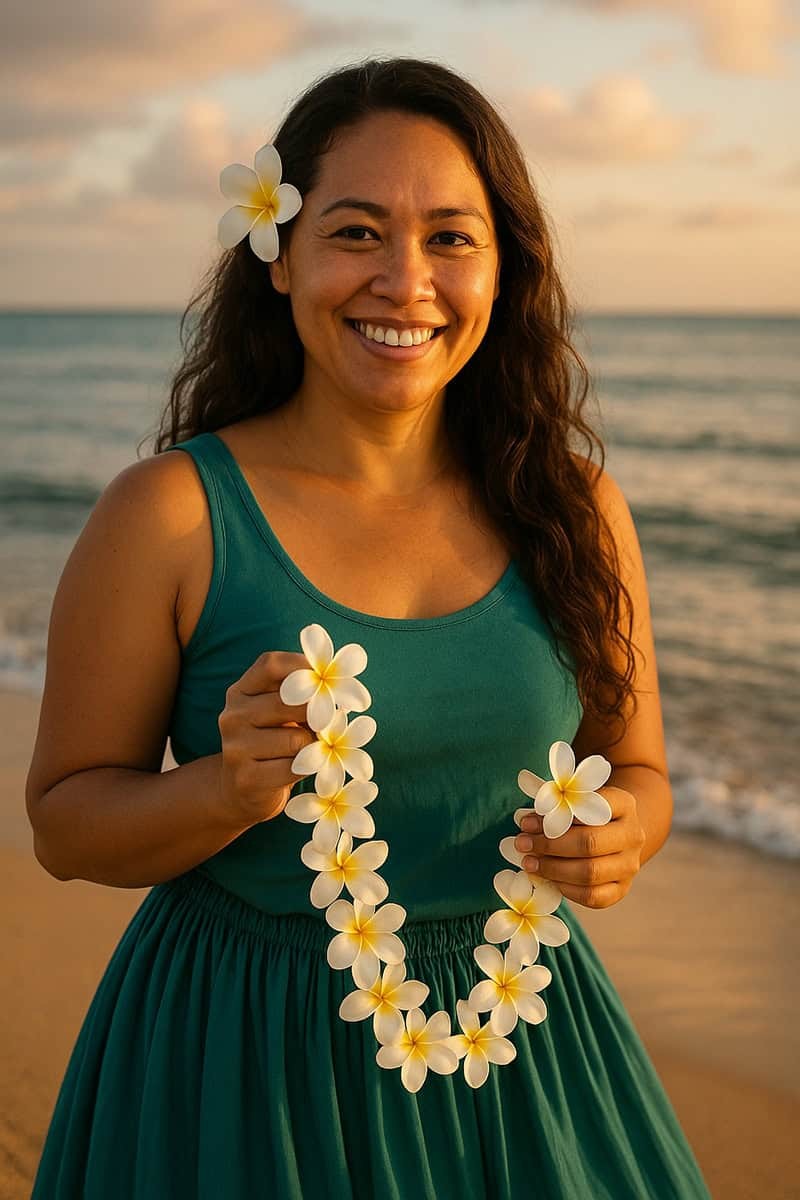

Ka ʻĀina – Stories of the Land
Kona's Sacred Sites & Historic Places

Written by a Cultural Expert
Leilani AkoWalking Through the Pages of Hawaiian History
The story of Kona is written on its land, from the sacred grounds of ancient chiefs to the fertile volcanic slopes that produce our world-famous coffee. To walk along the shores of Kona is to walk through the pages of Hawaiian history. The sites here tell the story of a kingdom at a crossroads, a time of immense change that shaped the Hawaiʻi we know today.
Wahi Pana – Kona's Sacred & Historic Sites
👑 Ahuʻena Heiau & Kamakahonu
This is the epicenter of modern Hawaiian history. Located on the grounds of the King Kamehameha's Kona Beach Resort, this was the personal temple and final home of Kamehameha the Great. After uniting the islands, he returned here to rule during his last years. It was at this very spot that three events forever altered the Hawaiian universe.
Three World-Changing Events:
• Kamehameha died here in May 1819
• His son Liholiho deliberately ate with women, shattering the ancient kapu system
• The first American Christian missionaries were granted permission to come ashore in 1820
Look for the tall kiʻi (carved wooden image) of Koleamoku, the god of healing; on his head sits a golden plover, the bird believed to have guided the first Polynesian voyagers across the vast ocean to these shores.
🏰 Huliheʻe Palace
Just a short walk down Aliʻi Drive from Ahuʻena Heiau, this graceful palace tells the next chapter of the story. Built in 1838 by Governor John Adams Kuakini, it became a favorite vacation home for the aliʻi (royalty) in the decades after the kapu system fell. It hosted generations of monarchs who were navigating a new, Westernized world.
Notable Resident: Princess Ruth Keʻelikōlani, a staunch defender of Hawaiian traditions who, despite owning the grand palace, famously preferred to sleep in a traditional grass hut on the grounds. The palace is a museum today, filled with beautiful koa wood furniture and artifacts from this fascinating era.
⛩️ Puʻuhonua o Hōnaunau (The Place of Refuge)
To understand the significance of the kapu system being broken at Ahuʻena Heiau, you must visit Puʻuhonua o Hōnaunau. In ancient Hawaiʻi, the kapu were sacred laws governing everything from fishing seasons to social interactions. Breaking a kapu—even accidentally, like a commoner's shadow falling upon a chief—was an offense punishable by death.
Your Only Hope for Survival: Flee, elude pursuers, and reach the boundaries of a puʻuhonua, or place of refuge. If you made it inside the massive stone wall that separates the refuge from the royal grounds, you would be absolved by a kahuna (priest) and could return to society, your life spared.
The site holds immense mana (spiritual power), as it is the final resting place for the bones of 23 high chiefs, which are interred in the Hale o Keawe temple. Walking these sacred grounds is a humbling and powerful experience that connects you directly to the spiritual world of ancient Hawaiʻi.
Visiting with Respect: These are not just historical sites—they are sacred places that continue to hold deep meaning for Native Hawaiians today. Please visit with reverence, follow all posted guidelines, and remember that you are walking on ground that has been sacred for over a thousand years.
Continue Your Kona Journey
Ready to explore more of Kona? Discover the coffee culture and artistic heart of the uplands.
🕐 Visiting Information
- Puʻuhonua: 7am-5:30pm
- Huliheʻe Palace: 9am-4pm
- Ahuʻena Heiau: Always open
- Entry Fee: $15 (Puʻuhonua)
🙏 Cultural Protocol
- No climbing on structures
- Speak quietly and respectfully
- Don't remove rocks or artifacts
- Follow marked paths only
📚 Hawaiian Terms
Sacred laws and taboos
Spiritual power
Hawaiian royalty
Priest or expert
📖 Kona Guide Navigation
💡 Leilani's Tip
Visit Puʻuhonua o Hōnaunau in the late afternoon. The golden light makes the ancient walls glow, and you'll often have the place mostly to yourself as tour groups leave.

